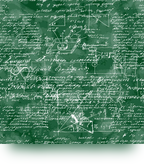Read and match the headings (A-E) to
the sections of the text (1-4). There is one
that you do not need to use.
A The longest nerve В Carrying messages C What controls our bodies D The control centre E Anatomy of the brain
1 The nervous system is the control centre of the body. It consists of the brain,
the spinal cord, which runs from the brain and down through your backbone,
and a gigantic network of nerves.
2 The brain is like the central computer for the nervous system. It receives messages
from different parts of the body, and then tells the body how to react. If you touch a
hot pan by accident, for example, the nerves in your skin form a message of pain.
The message gets passed on through the nerves in the spinal cord to the nerves in
the brain. The brain takes this message, translates it, then sends a message back
telling the muscles to pull your hand away from the heat. This all happens in less
than a second!
3 The brain is a very complex organ with many different parts. The biggest part is the
cerebrum, responsible for intelligence, memory, personality, emotion, speech and the
ability to feel and move. Next is the smaller cerebellum, controlling balance,
movement and coordination, and the brain stem. This is responsible for taking in,
sending out and coordinating all of the brain's messages - just like a secretary! It also
controls many automatic body functions such as breathing, heart rate and digestion.
The thalamus carries messages from the sensory organs like the eyes, ears, nose and
fingers to the cerebrum, and the hypothalamus controls other automatic processes
such as body temperature and appetite. Lastly, there is the tiny pituitary gland, which
produces and releases hormones to control growth, metabolism, our response to
stress, and many other things.
4 Nerve cells, or neurons, are like long, thin threads with
fingers, called dendrites, at each end. The dendrites of one
neuron almost touch the dendrites of the next neuron
When a neuron is stimulated, by heat, touch or sound,
for example, or by some other message, it actually
generates a tiny electrical signal. This releases chemicals
that enable the signal to be passed on from the dendrites
of one neuron to the next, until the message reaches the
brain. The brain alone contains around 100
billion neurons!















